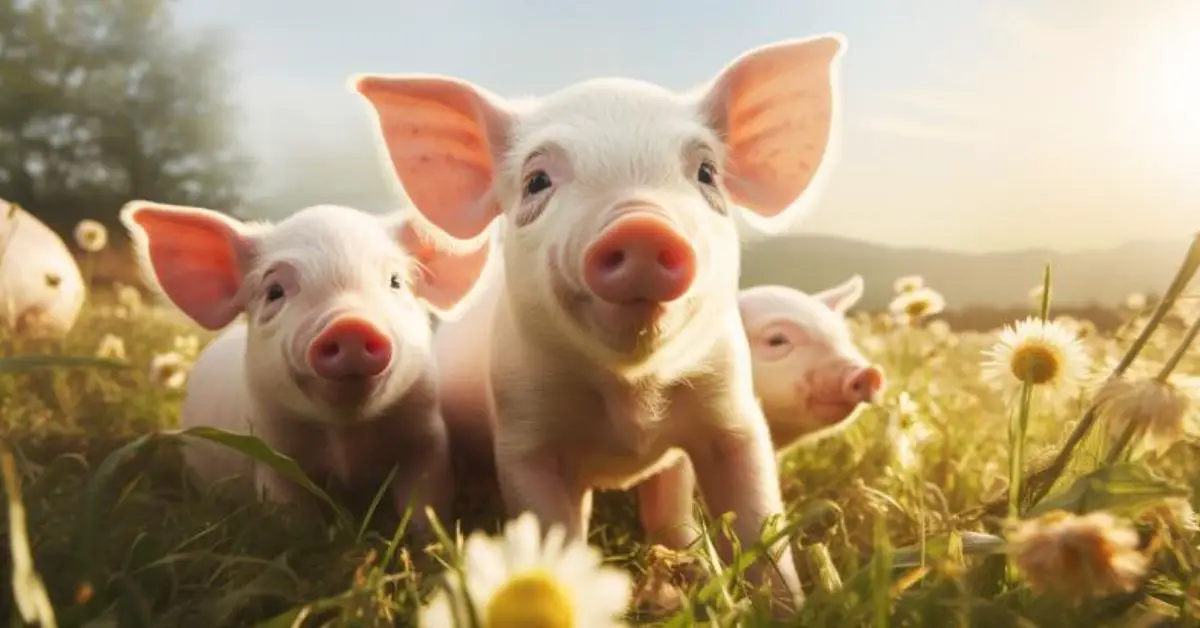In a nutshell, the Bible presents pigs as unclean animals. This primarily comes from Old Testament laws where pigs, due to their eating habits and the fact that they do not chew the cud, were considered impure. Believers were not allowed to eat pork or even touch pig carcasses. In the New Testament, the perspective shifts a bit with Jesus’ teachings, reflecting a broader view of purity and impurity.
Curious about how a simple animal like the pig could stir up so much debate? Stick around as we explore the surprising and sometimes confusing biblical stance on pigs.
What Does the Bible Say About Pigs?
The Bible’s view on pigs is more than just an ancient dietary restriction; it’s a window into the cultural and religious practices of biblical times. Initially, in the Old Testament, pigs were seen as the epitome of unclean animals. This wasn’t just about hygiene; it was deeply connected to the spiritual concept of purity.
In ancient Israel, following God’s laws was paramount, and this included strict dietary guidelines. Pigs, which eat almost anything and do not chew the cud, were deemed unclean. This classification wasn’t unique to pigs, but they often became the poster animal for impurity in religious texts.
Now, let’s fast forward to the New Testament. Here, the perspective begins to shift. Jesus challenges traditional views of purity, suggesting that impurity isn’t about what goes into the body (like eating pork) but what comes out of the heart. This was revolutionary and hinted at a change in how followers of Christ viewed dietary laws.
Interestingly, the Bible also uses pigs in various metaphors and parables. These instances often reflect the prevailing view of pigs as something undesirable or unclean. Yet, they also serve to illustrate deeper spiritual truths, far beyond the mere physical nature of the animal.
In essence, the Bible’s stance on pigs is twofold: a reflection of cultural and religious practices of the time and a tool for teaching deeper spiritual lessons. This duality is fascinating and reflects the complex nature of biblical teachings.
Bible Verses About Pigs
- Leviticus 11:7-8: “And the pig, though it has a divided hoof, does not chew the cud; it is unclean for you. You must not eat their meat or touch their carcasses; they are unclean for you.” This verse clearly outlines the dietary restrictions regarding pigs, marking them as unclean.
- Deuteronomy 14:8: “The pig is also unclean; although it has a divided hoof, it does not chew the cud. You are not to eat their meat or touch their carcasses.” This repetition in Deuteronomy emphasizes the importance of this law in Jewish dietary customs.
- Isaiah 65:2-4: “All day long I have held out my hands to an obstinate people, who walk in ways not good, pursuing their own imaginations… who eat the flesh of pigs, and whose pots hold broth of impure meat.” Here, the consumption of pork is associated with disobedience and rebellion against God.
- Matthew 7:6: “Do not give dogs what is sacred; do not throw your pearls to pigs. If you do, they may trample them under their feet, and turn and tear you to pieces.” In this teaching of Jesus, pigs symbolize those who would not appreciate or respect what is holy.
- Mark 5:11-13: The story of Jesus casting demons into a herd of pigs, which then rush down the steep bank into the lake and are drowned. This event demonstrates Jesus’ power over evil and also uses pigs, considered unclean, as a vessel for unclean spirits.
- Luke 15:15-16: In the Parable of the Prodigal Son, the son ends up feeding pigs, a task that would have been seen as abhorrent to Jesus’ Jewish audience. This detail underlines the depth of the son’s desperation and disgrace before his redemption.
- 2 Peter 2:22: “Of them the proverbs are true: ‘A dog returns to its vomit,’ and, ‘A sow that is washed returns to her wallowing in the mud.'” This verse uses the imagery of a pig to illustrate the folly of returning to sinful ways after experiencing the cleansing of sin.
- Proverbs 11:22: “Like a gold ring in a pig’s snout is a beautiful woman who shows no discretion.” This proverb uses the imagery of a pig, traditionally viewed as unclean, to make a point about beauty devoid of wisdom or discretion. It contrasts external appearance with internal character, using the pig as a metaphor for something valuable being misplaced or misunderstood.
- Isaiah 66:3, 17: “Those who consecrate and purify themselves to go into the gardens, following one in the midst, eating the flesh of pigs and rats and other abominable things—they will come to an end together, declares the Lord.” In this passage, the prophet Isaiah condemns certain practices, including the eating of pork, as contrary to God’s will, associating them with idolatry and rebellion.
- Proverbs 27:22: “Though you grind a fool in a mortar, grinding them like grain with a pestle, you will not remove their folly from them.” This proverb, while not directly mentioning pigs, echoes a similar sentiment to the earlier verse about a gold ring in a pig’s snout. It implies that certain inherent qualities, like folly in a fool, cannot be easily changed, akin to the unclean nature of pigs in biblical symbolism. The verse uses vivid imagery to express the idea that external changes do not always equate to internal transformation, a theme that resonates with the biblical portrayal of pigs as symbols of impurity and unchangeability.
While there are not ten specific verses that focus solely on pigs, these examples from both the Old and New Testaments illustrate the various ways in which pigs are referenced in the Bible. From strict Old Testament laws about dietary practices to New Testament parables and teachings, pigs have been used as symbols of impurity, as metaphors in teaching spiritual lessons, and as examples in illustrating the transformation of religious practices and beliefs.
Through these verses, we see how the Bible uses the image of the pig not just in a literal sense, but also as a powerful symbol in conveying deeper spiritual truths. The evolution of the pig’s representation from the Old to the New Testament also mirrors the broader transition in understanding the nature of sin, purity, and God’s expectations from His followers.


